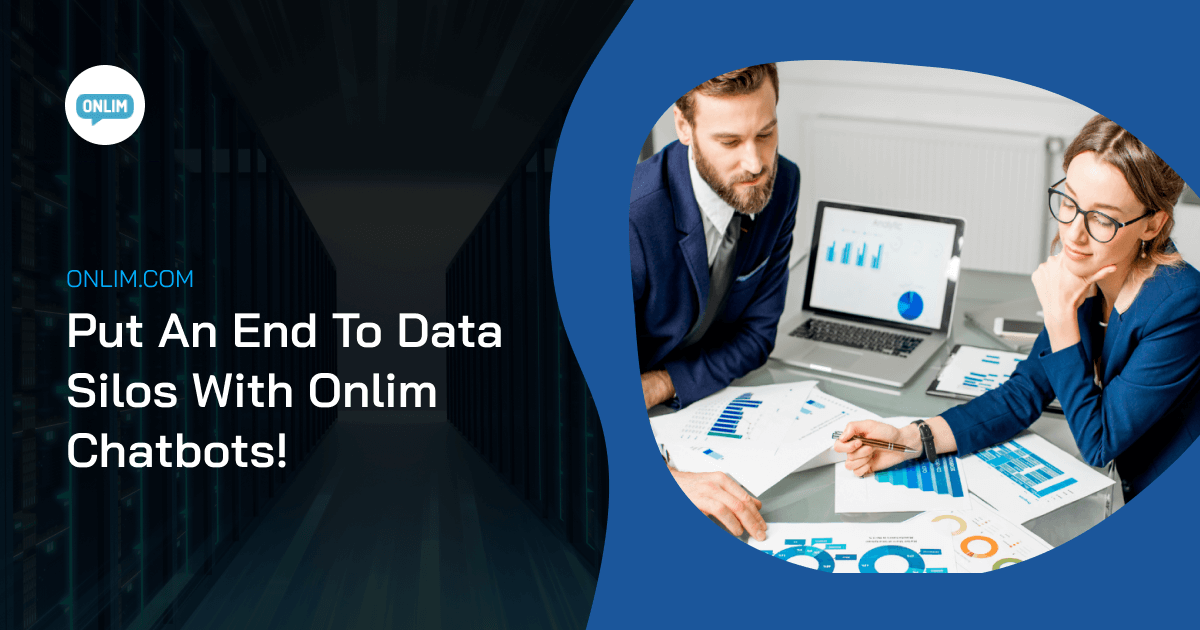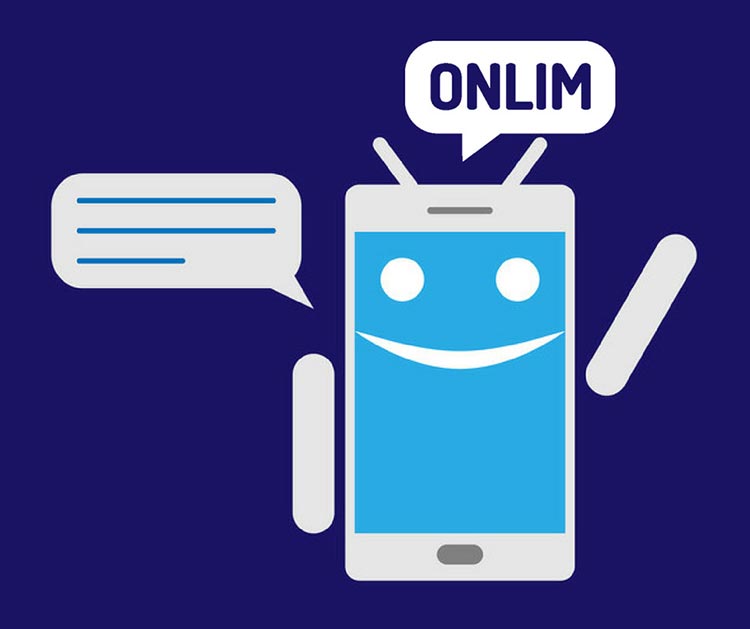How Onlim Chatbots Break Down Data Silos And Increase Agility
Ongoing digitization offers great opportunities for companies. More flexibility, increased productivity and lower costs are just a few examples. But as digitization increases, so does the risk that data silos will develop in companies and that the hoped-for benefits will not be realized. This happens when important data is decentralized and not available to all employees.
In this article, we will show you how you can break down or completely eliminate data silos with Onlim chatbots.
First, let’s have a look at what the term “data silo” actually means.
What are data silos?
A data silo is a collection of data that is stored in a decentralized way. It is only accessible to a specific group of people within the organization.
There are many reasons why data silos occur. Two of the main problems are:
- Separate data collection: Relevant customer data is only collected by a specific employee. For example, a sales employee stores data about his acquisition calls locally on his computer. In this case, the data cannot be used or analysed by other employees.
- Different tools: Another problem can be the use of different tools. In many cases, these are not compatible with each other and the evaluation or use of the data is not possible across the tools.
What are the consequences of data silos?
The consequences of data silos are more far-reaching than you will notice at first glance:
- No inter-departmental processes are possible: Collaboration across different departments is difficult. Data cannot be shared or merged to work together on a project.
- Data sets with different information: It may be that data is collected twice in different systems in one company. A procedure that can become a major source of errors after a while, since both data sources will never match completely and different collection procedures are used.
- Wrong conclusions in data analysis: Each data silo offers only a very limited view of the information. This can lead to misinterpreting data and making decisions based on incorrect information.
- Tedious gathering: The search for information and data can be frustrating and work-intensive. It is not always clear if the desired data is even available and who the right contact person is.
- More resources required: Data silos cause unnecessarily high storage requirements and lead to higher administrative costs.
How can you break down data silos with Onlim chatbots?
Companies can actively counteract data silos. Chatbots in internal communications make it possible. This is because Onlim chatbots have a decisive advantage: they are based on Knowledge Graphs that collect and structure all important data of a company in one place. At the same time, they map data with the appropriate semantics and contextual reference. This makes data and information readable and interpretable by machines.
With chatbots, you can permanently change the way we obtain information and manage knowledge as well as break down data silos. This offers employees a wide range of benefits:
1. Finding knowledge
Spontaneous questions about sales figures or the best marketing channels during a meeting are no longer a problem with a chatbot. With a short question to the bot, it could find and provide relevant data in seconds, and not only via text but also via voice command.
It’s not just during meetings that your employees can benefit from a chatbot. How often are you annoyed about not being able to find a spreadsheet you created a few months ago or wonder where to find the presentation from the last meeting?
Chatbots can be very helpful for finding information during your daily work routines. Employees can ask the chatbot for the information they need in a natural language-based way, just like they would ask a colleague. This eliminates the hassle of endlessly searching for information.
If you want to learn more about Knowledge Graphs and how they enable meaningful conversations between humans and machines, download our whitepaper.
2. Making knowledge accessible
Especially in the current situation, which is characterized by home office and decentralized working conditions, it is even more important to make knowledge accessible to all employees. After all, the informal exchange at the copier or the office kitchen is no longer possible.
With a chatbot based on Knowledge Graphs, employees can access the information they need regardless of location. This is because all data is stored in a central place, and it is not necessary to be physically in the office to access this data.
Also interesting: Using Chatbots For Crisis Management And Beyond (Part 1)
3. Bundling knowledge
Timeliness is also a huge advantage of an internal chatbot. If all data is collected in a Knowledge Graph, it can be used as a single source of truth. Employees can be sure that the data they get from the chatbot is constantly kept up to date and they can rely on the quality of the data.
If you need support with the implementation of a chatbot for your internal communication, feel free to contact us. We will help you clarify open questions and find the best approach for your company.
You can also test our Conversational AI platform free of charge for 10 days.
What are Large Language Models (LLMs)?
March 18th, 2024|
What are chatbots and how do they work?
November 23rd, 2023|
The AI Act and its impact on the use of chatbots
October 27th, 2023|



